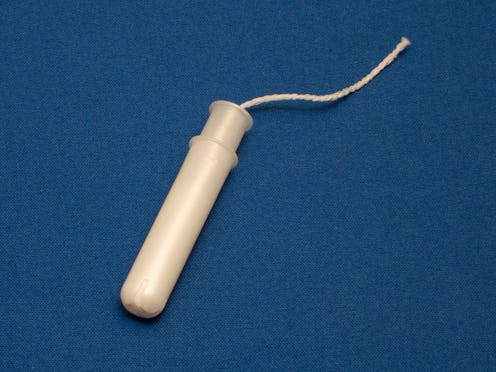Life
7 Stats On Period Problems Around The World
When we talk about problems related to our periods, we might start with the obvious: cramps, acne flare ups, changes in mood. However, period problems around the world reveal a reality in which something as natural as menstruation affects the lives of many, beyond its clinical side effects. From lack of access to affordable menstrual products to overall stigmatization, the way we talk about period problems needs to extend to those whose health and well-being is most at stake.
Let’s start with the good news: There are already plenty of organizations dedicated to menstrual product access, working both to make sure people who have periods have the products they need and destigmatize the conversation on periods overall. WomenStrong International is one of those organizations working to support women around world. As a group of nonprofits focused on women-driven solutions, WomenStrong International works to make menstrual products and better reproductive health education a reality for everyone. Their mission focuses on six essential needs: health, safety, shelter, education, economic empowerment, and urban environment. Lack of access to basic necessities, like period products, affects each of these six needs. In turn, making sure people have access to menstrual products has a positive effect on people’s lives beyond the basic, health-related purpose these products serve.
One of the biggest problems with the way we talk about periods is the fact that we often don’t talk about them. If base level conversations about periods are deemed taboo, trying to address these more dire problems related to them becomes even more difficult. The first step to solving a problem is understanding it. You can get educated with these seven statistics below that show the reality of period problems around the world. Then, consider donating to WomenStrong or find out how you can support any organizations working to solve these period problems around the world.
1Around the world, only 12 percent of young people with periods have access to the products they need.
In India, more than eight in ten people don’t have access to menstrual products. The same is true for an estimated 50,000 people who are homeless in the United States.
2In Kenya, 65 percent people don’t have enough money to buy menstrual products.
For the more than one in eight women in the United States living below the poverty line, access to affordable menstrual products is also a problem.
3In some countries, one-third of girls who’ve reached puberty reported their first sexual encounter was forced.
According to research from the World Health Organization (WHO), getting their period makes many young women and girls around the world target for sexual violence. Around the world "complications of pregnancy and childbirth are the leading cause of death in young women aged 15–19,” says Dr. Flavia Bustreo, who is WHO’s Assistant Director-General for Family, Women’s and Children’s Health.
4In Burkina Faso, 83 percent of students don’t have a place to change menstrual products at school.
In Niger, the same is true for 77 percent of students. Having access to period products is only part of the solution as people need safe, sanitary space to use and change those products regularly.
5In Africa, one in ten adolescent girls miss school during their period.
Missing school during their period is also the reality for one in four students in India. Having a period shouldn’t have to cost a student their education, and studies have shown that giving girls access to period products helps them stay in school. In terms of economics, when women suffer the community suffers, as every additional year of education can increase a woman’s earnings up to 25 percent over the course of her lifetime.
6Across the world, an estimated 100 million young people lack access to adequate menstrual products
This problem also persists closer to home, as 26.4 million people can’t afford menstrual products in the United States.
7In some countries, people are still isolated from their communities while on their periods.
Period stigmatization has real consequences. It prevents people from having access to basic necessities to impedes on their education and career opportunities. Teaching everyone about periods equally and talking about it openly is necessary in order to address the reality of period problems around the world and help reduce the stigma overall.
